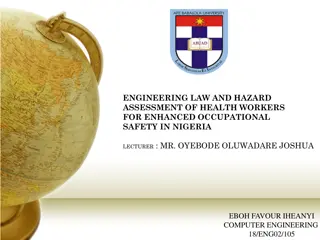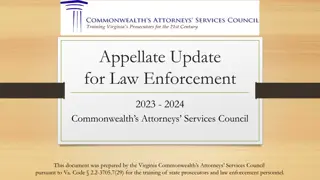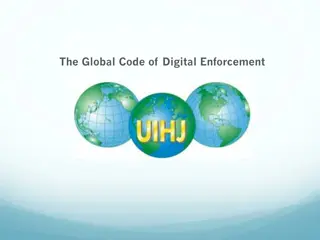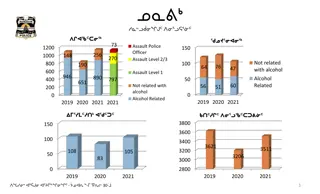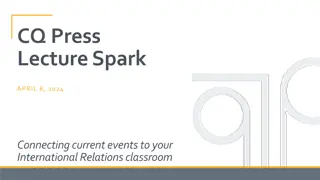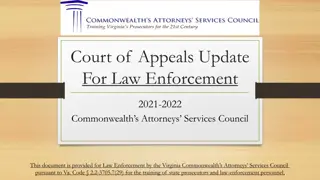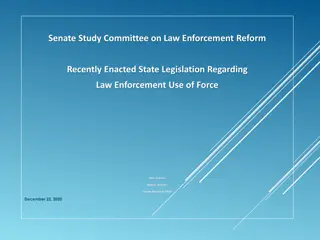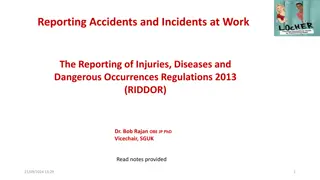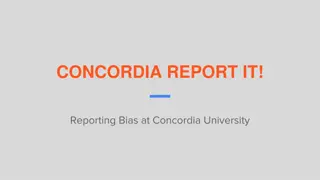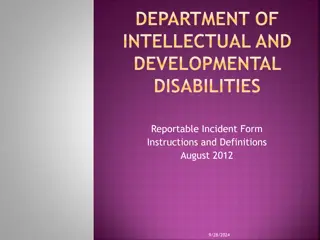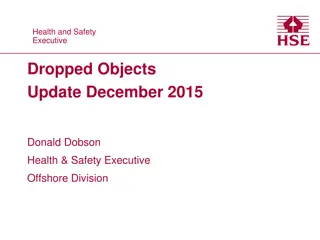Standoff Incidents in Law Enforcement
Standoff incidents present unique challenges for law enforcement, with suspects often better armed than initial responders and potentially suicidal. The incidents may involve planned attacks, barricaded suspects, hostage situations, or active shooters, requiring specific response protocols such as containment, negotiation, and strategic communication.
Download Presentation

Please find below an Image/Link to download the presentation.
The content on the website is provided AS IS for your information and personal use only. It may not be sold, licensed, or shared on other websites without obtaining consent from the author.If you encounter any issues during the download, it is possible that the publisher has removed the file from their server.
You are allowed to download the files provided on this website for personal or commercial use, subject to the condition that they are used lawfully. All files are the property of their respective owners.
The content on the website is provided AS IS for your information and personal use only. It may not be sold, licensed, or shared on other websites without obtaining consent from the author.
E N D
Presentation Transcript
Containment and negotiation, normally associated with standoff incidents may not be useful Often better armed than initial responding officers May have planned attack to include sustained confrontation with police Escape from police is usually not a priority May employ some type of diversion 2
Usually suicidal, either by self-inflicted wound or by suicide by cop Some degree of familiarity with the location they choose for their attack Event may turn from active to static and back again May become barricaded subject if access to victims is stopped 3
Barricaded Suspect/Hostage Taker In a position of advantage, is armed, and has displayed violence Suspect may or not be holding hostages and there is no indication that suspect is causing death or serious bodily injury. A STATIC SITUATION Active Assailant deployment is NOT to be used in this situation or similar situations Traditional response (perimeter negotiation) 4
In the case of an Active Shooter event, an Incident Command system will be setup in order: Get officers needed to respond Emergency Care Control of movement Communication between agencies involved One point of contact in order to deal with situation
HOSTAGE/BARRICADED SUBJECT VS. ACTIVE SHOOTER
One or more terrorists or criminals hold people against their will and try to hold off authorities by force, threatening to kill the hostages if provoked or attacked. The 5 Cs: Contain Control Communicate Call SWAT Create a Plan
One or more subjects who participate in a random or systematic shooting spree, demonstrating their intent to continuously harm others. An active shooter s overriding objective appears to be that of mass murder, rather than criminal conduct such as robbery, kidnapping, etc. - NTOA
Texas Tower 1966 resolved by patrol created need for SWAT. Columbine High School 1999 recognition that these events need to be resolved by patrol. Beslan, Russia 2004 49 Terrorists took over school. 314 hostages killed (186 children), 21 soldiers killed, 32 terrorists killed (17 escaped). Mumbai 2008 10 Terrorists gunned down 172 people over a 60 hour time span Each incident has been taken into consideration in how we deal with and tactics involved in resolving situations.
Stay Together 540 Cover/Security Around the Team Communicate Cover Angles Threshold Evaluation (Slice the Pie) Speed
Innocent Civilians First Responders Actors/Suspects Property
Team Movement Techniques Deliberate slow/unknown location Direct to Threat known location
Solo (extigent, no back-up, actionable intel) 2 (Tethered & Side by Side) 3 (Tethered & Side by Side) 4 (Diamond, T, Y, Box, Heavy Head) 5 (Special Skills/Double Rear Guard)
SIDE X SIDE TETHERED
SIDE X SIDE TETHERED
DIAMOND Y T
BOX FBI FBI FBI FBI HEAVY HEAD
FBI SPECIAL SKILLS FBI FBI FB I FBI DOUBLE REAR GUARD
Security Isolate, Distract & Neutralize Gunman. Immediate Action Plan Establish hallway security and follow-on plan. Medical identify, triage & treat injured
Bomb Cover appears that bomb thrown will stop 15 or more from team - seek cover, 90 degree offset/ create air gap Bomb Go - when thrown device lands within 15 of team - move quickly past device and engage suspect throwing the device.
Advanced Law Enforcement Rapid Response Tactics (ALERRT) www.alerrt.com









